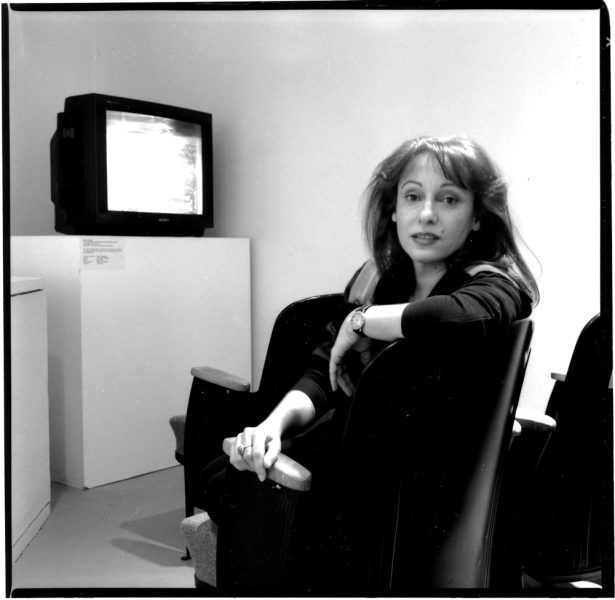
Photo by Suara Welitoff.
Twenty-seven years after joining the ICA as a guest curator, the ICA’s Director of Film and Media is turning to her own film projects.
When Branka Bogdanov joined the ICA in 1989, the museum was still on Boylston Street, and the staff of about twenty-seven shared four computers among them.
It was a time of transition both technologically and politically. “The Berlin Wall fell, the Soviet Union ceased to exist, the Cold War ended, my small former country, Yugoslavia, dissolved into six different countries, and in a way, art predicted all of these changes,” Branka says. One of the first exhibitions she saw on view at the ICA was Between Spring and Summer: Conceptual Art in the Era of Late Communism. “The artists in that exhibition predicted the fall,” she says. “We have to listen to and recognize what artists say.”
Branka had first come to the United States in the mid-80s on a six-week cultural exchange program, giving talks about female Eastern European filmmakers in Louisville, Los Angeles, Albuquerque, and at the ICA, where then-director David Ross offered her a year-long position as a guest video curator. “I came for a year and then I stayed 27 years,” she says.
I didn’t come to the USA, I came to the ICA.
To amplify the voice of the artist, Branka instituted the ICA’s in-house video production program, one of the first of its kind. These videos included award-winning interviews with artists, curators, and experts, as well as studio visits. “It was a unique endeavor at the time in that the program crossed boundaries between different departments in the museum, looking under the many layers of the artist’s creation to provide context.”
The goals of the program were twofold: to provide context for complex ideas, and to bring the voice of the artist to a wider audience. “I saw we had these exhibitions and openings, and the artists came, but they were only for a certain group of people. And I thought, maybe other people would like to see what artists’ studios look like, how artists talk about their work.”
Branka estimates she’s filmed more than 200 artists for the ICA, “from Cornelia Parker to Marlene Dumas, from Anish Kapoor to Thomas Hirschhorn, to Shellburne Thurber and Sheila Pepe, to all of the wonderful Foster Prize artists, to Damián Ortega, to Louise Bourgeois.”
Filming Bourgeois, in 2007, was especially memorable. After months of preparation, Branka and her crew had only a few hours with the artist, then 96, in her New York studio. “She was just amazing, full of energy and wit,” Branka says. “During the filming, she did many things I didn’t even ask her to do. She sang. She spoke about feminism. And then at the end, I asked if she wanted to say anything else, and she said, ‘Turn off the camera. Come with me.’ And she did a little performance for us, just gliding through some kind of sheets in her dressing room. It lasted maybe 2 or 3 minutes. But it was simply amazing.”
In December, Branka left the ICA to focus on her own film projects, including a documentary about the Sarajevo Haggadah, a rare 14th-century illustrated manuscript protected over centuries by Christians, Muslims, and Jews across Europe.
“I didn’t come to the USA, I came to the ICA,” Branka says.
See a few recent samples of Branka’s work below.